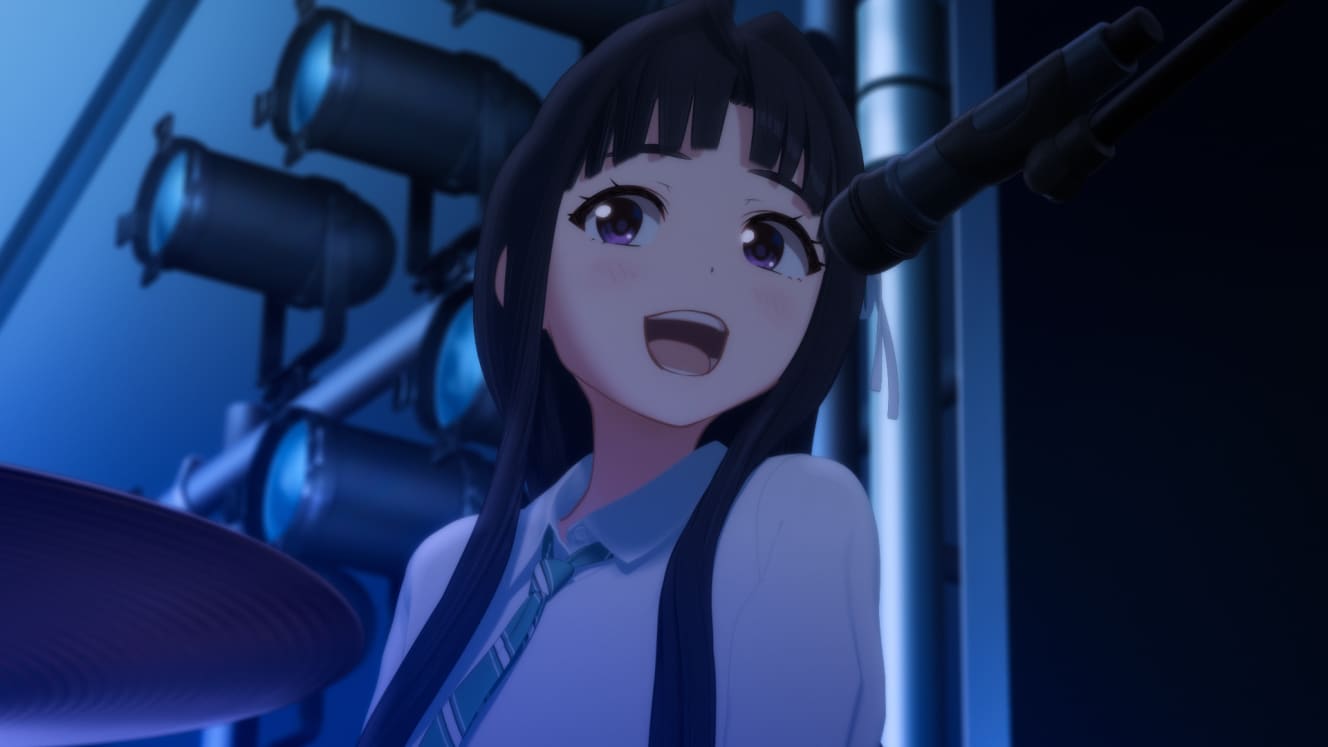Skilled Band Girls Challenge Themselves as Voice Actors in Anime ‘Girls Band Cry’
――Gathering famous voice actors to attract fans is a well-known marketing strategy. Why did you choose not to do that?
“I’ve always believed that if something is interesting, people will watch it, and in reality, if it’s interesting, people will watch it. So, I decided to trust in the strength of the work itself.”
――For the members of “Togenashi Togeari,” was there a greater emphasis on being a “band member” or being a “voice actor”?
“Being a band member. People who are serious about music have good ears, so I had the expectation that they would quickly become proficient in voice acting as well, and in reality, they became very skilled.”
――Mirei, who plays Subaru Awa, improved rapidly since her debut in episode 2. Her performance during the voice test in episode 11 is captivating and could be listened to continuously.
“Yes, Mirei improved remarkably quickly.”

――As a producer, what was something you absolutely wanted to include in the work?
“I personally wanted to push for the entire project. If I had to specify, I wanted to see Hanada-san’s script visualized under Director Sakai at Toei Animation. Hanada-san’s script is rich in detail and requires a high level of realism, which demands considerable skill from the storyboard artists. Director Sakai is capable of that. His storyboards also demand high skills from the animators, and the CG animators at Toei Animation were up to that challenge. It was my job to ensure that this was all completed by the broadcast.”
――The role of a producer often involves significant relationship management. In “Girls Band Cry,” the cooperation with various shops and facilities in Kawasaki City, the main setting, was exceptionally well-managed, creating a strong local engagement.
“That was the result of the studio’s dedicated efforts, including mine (laughs). We made phone calls, explained what the anime was about, and how we wanted to use their locations in specific scenes. If they agreed, we visited the shops, took photos, and built up from there. Most people found it interesting when we explained, and it rarely resulted in a rejection. We aimed to make everyone involved happy and create a Win-Win situation.”
――Why did you choose Kawasaki as the setting? Why did the protagonist, Nina, who comes to Tokyo from Kumamoto, end up choosing this city? Were there other candidates?
“Initially, I thought places like Yokohama might be interesting, but it felt a bit too stylish for this story (laughs). Then I considered the 23 wards of Tokyo. However, if you’re depicting a young girl coming to Tokyo and struggling with poverty while trying to make it with a band, the high rent in the 23 wards makes it unrealistic. That’s when the idea of Kawasaki, next to Yokohama, came up. During the location scouting, we saw a banner saying ‘Music City Kawasaki’ right outside the station, and there were music stores and live houses. It was clear there was a music scene there. Also, when we checked the rent, it was quite affordable.”
――How much is the rent for Nina’s apartment in the show?
“Based on our scouting in 2020, it was around 50,000 yen. Given the rising cost of living, it might not be that amount now. At that time, there were properties available in the 30,000 yen range that seemed suitable for Nina, so we thought it would work.”

The attempt to depict the current reality of the Reiwa era in a challenging and experimental way, and to create a grounded story, gradually took shape and quickly gained passionate popularity after its broadcast.
In the second part of the interview, we will focus on what happened once the show started airing, exploring the finer details of the story, key points, and the buzzworthy final episode.
Confession from the Mastermind Behind ‘Girls Band Cry’ Addresses Doubts About That Scene and Answers in Episode 13
Profile: Tadashi Hirayama
Tadashi Hirayama graduated from the University of Tokyo and joined Madhouse in 1999, moving to Sunrise in 2000. As a producer, he has been behind hit works such as Love Live!, Love Live! Sunshine!!, and Horizon’s Edge. Since 2019, he has been with Toei Animation, where he is responsible for producing Girls Band Cry.
Interview and Text by: Miyu Kurusu
Miyu Kurusu is a freelance writer specializing in humanities, social issues, and subculture. She writes articles for various media, including magazines, newspapers, and online platforms. She has authored numerous books.
X ID: @mewzou
Girls Band Cry
Available for unlimited streaming on Amazon Prime Video, ABEMA, BANDAI CHANNEL, Hulu, and U-NEXT
Official website: https://girls-band-cry.com/
Official X: https://x.com/girlsbandcry
Photo: ©️ Toei Animation